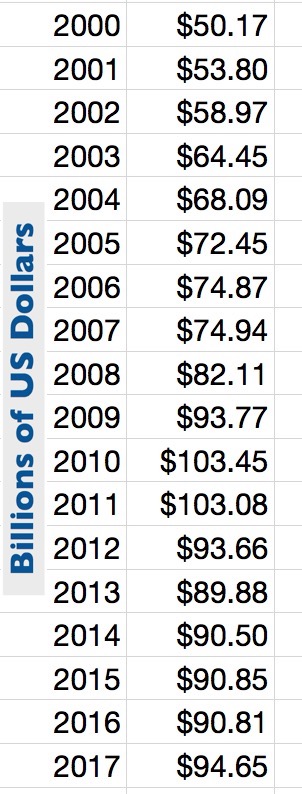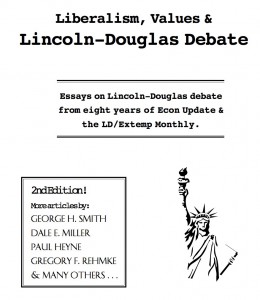For the March/April 2017 Lincoln-Douglas Debate: “Resolved: The United States ought to guarantee the right to housing,” students enter the value side of a century old debate on policies to provide access to safe and affordable housing.
Students searching for “a right to housing” quickly find supporting articles and books, such as: “The Case for a Right to Housing,” “A Right to Housing: Foundation for a New Social Agenda,” “Housing as a Human Right – National Low Income Housing Coalition,” “The Right to Adequate Housing” and many others.
Everyday Debate’s The Right to Housing topic page notes students will have “little problem finding supporting evidence and points of view.” and the Introduction page explains:
The “right” has been written into several international standards documents and covenants and is widely supported by human rights groups.”
[Then quoting Alexander:] The human right to housing, embodied in several international treaties, declarations, and constitutions, establishes that every person has a right to adequate housing and to the continuous improvement of living conditions.
After quoting the 1949 Housing Act goal of “the implementation as soon as feasible of a decent home and a suitable living environment for every American family,” Everyday Debate asserts:
However, to date, the goal has never been met since there has been no serious effort by the federal government to provide the needed resources.
It’s not clear what a “serious effort” would look like, but the federal government has spent hundreds of billions of dollars providing low-income housing and billions more have been spent by state and local governments for housing projects and subsidies. Affirmative debaters can advocate housing rights and for far more to be spent. Mixes with city, state, and federal housing programs are the efforts NGOs (non-government agencies) like Habitat for Humanity and many other local, state, and national nonprofits. More on NGOs and private housing below.
Students find claims that governments are not doing enough for [food safety, housing, education, child care, health care, etc.] and claims by conservatives and libertarians that government is doing too much. Across the political spectrum critics insist housing policy and programs need reform.
Public Choice economists make a separate case that government programs are often subverted or “captured” by corporations and other organized interest groups. The history of housing for the poor in the U.S. illustrates the many ways local, state, and federal policies and regulations protect established interests (Section 8 landlords, housing developers, current homeowners, and some NGOs and housing agencies).
To the question of federal spending on housing for the poor, according to the Budget of the U.S. Government, Fiscal Year 2017, Analytical Perspectives (quoted by Howard Husock of the Manhattan Institute):
Federal housing subsidies… In 2016, the federal government spent $30 billion on rental subsidies for low-income households and almost $6 billion on public housing. (Washington: Government Printing Office, 2016), Table 29-1.
USGovernmentSpending.com has page on total federal welfare spending, with housing expenditures in red in the chart at right, explaining:
There are three major welfare programs: relief (or income security), housing rent subsidies, and unemployment benefits.
The US Government Spending site also offers downloads of year-by-year federal housing expenditures, shown in table here for 2000 to 
2017 (in billions of dollars). This is not a claim the federal government “already spends enough” or that current programs already address “a right to housing.” And obviously federal spending on housing subsidies is a lot less than spent in 2016 on national defense ($522 billion or $598 billion).
Students can dive into debates on local, state, and federal housing programs ranging from fraud and cronyism claims for Section 8 housing to stories of local misdeeds in diverting affordable housing funds.
Three housing stories some a range of housing issues: Philadelphia: “Affordable-housing dreams become Section 8 nightmares” (July 8, 2016), Texas/nationwide: “How Housing Policy Is Failing America’s Poor: Section 8 was intended to help people escape poverty, but instead it’s trapping them in it,” and Seattle: “Anatomy of a Swindle: How a Rogue Non-profit Captured the Emerald City,” (September 13, 2016).
The notes and links above on housing policy history and spending may seem more for policy debate than LD value debaters. Students can research positive and negative rights, and the views of natural law classical liberals that “life, liberty, and the pursuit of happiness” are negative rights. By negative they mean right to life and liberty should not be interfered with by others.
Every claimed right creates an obligation on the part of others not to interfere to restrict rights. A right to swing your arms freely is limited by your neighbor’s nose, and your neighbor’s right to not be hit in the nose limits your freedom of movement.
A natural right to housing would prevent others from interfering with our right to housing, and as a negative right would protect building, rent, boarding, or share a house, apartment, or room. A negative housing right would protect from neighbors or governments unjustly interfering with housing choices (though also would restrict new housing where it imposed unjust burdens on neighbors).
A positive rights claim for housing, on the other hand, creates an obligation on the part of others or government to provide housing. Negative rights claims insist others leave us alone to build, rent, or share housing as we please, but a positive rights claim call upon others to provide housing. This would create a positive obligation on the part of others or government to build, rent, or provide housing. 
For much more on positive and negative rights claims for value debaters see the online collection Liberalism, Values and Lincoln-Douglas Debate, (pdf: liberalvaluesld), from “The LD/Extemp Monthly” and later debate newsletters.
—
We know this because of remarkable success in other major cities. The best example is probably Houston (with Harris and Fort Bend counties), where a determined mayor, Annise Parker, built a public-private campaign that has rescued 77 percent of the region’s unsheltered homeless population, reducing their numbers from 5,194 in 2007 to 1,186 as of last January.
Houston’s unsheltered homeless population is down about 75 percent since 2011, and leaders there credit their new housing-first approach.
The Atlanta Housing Authority uses even stronger language to explain its work requirement for the nondisabled: “AHA continues to believe strongly in the value, dignity, and economic independence that work provides.” In some Atlanta developments, employment rates (or enrollment in education or training) run as high as 94 percent. The Abt report also found that 20 of 34 MTW [Moving To Work] authorities are moving to change rent rules that require tenants to pay 30 percent of their incomes in rent—implying a rent increase of 30 cents for every additional dollar earned and providing an unintended incentive to move to the underground or even criminal economy.
In 2005, Utah set out to fix a problem that’s often thought of as unfixable: chronic homelessness. The state had almost two thousand chronically homeless people. Most of them had mental-health or substance-abuse issues, or both. At the time, the standard approach was to try to make homeless people “housing ready”: first, you got people into shelters or halfway houses and put them into treatment; only when they made progress could they get a chance at permanent housing. Utah, though, embraced a different strategy, called Housing First: it started by just giving the homeless homes.
